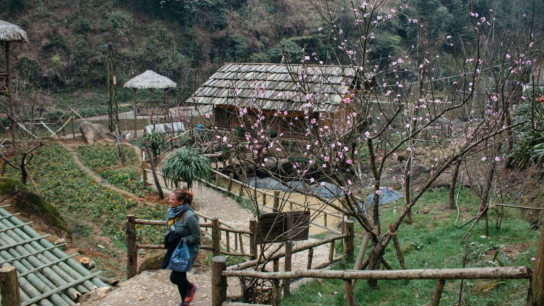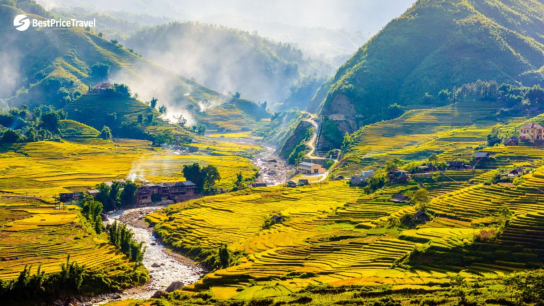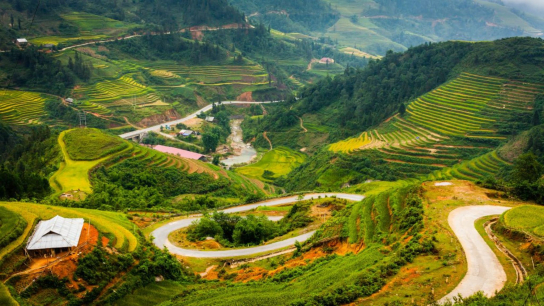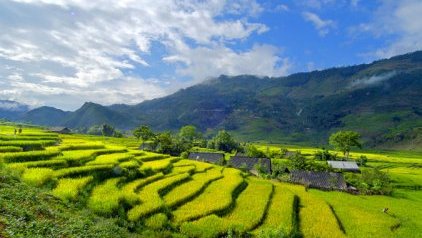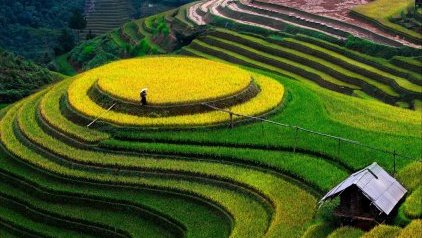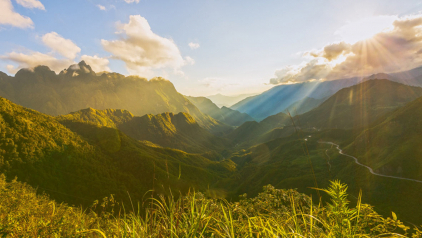Best Time to Visit Rice Terraces in Sapa
Before planning your trip to Sapa, you’d better set the best time to feast your eyes on the most impressive scenery of Vietnam rice terraces in this highland town.
Known as the most amazing tourist town in North Vietnam, Sapa is a wonderland of awe-inspiring rice paddies formed by numerous terraces like a ladder up to the sky. The scatter of mountain ranges and wooden houses in ethnic villages nearby have made the surroundings much more picturesque.
Go exploring the “Bali of Vietnam” and find out which is the best season to behold the most appealing beauty of rice terraces in Sapa.
Vietnamese rice terraces in a nutshell
The image of rice terraced fields has become more and more popular among foreign tourists. You can admire a stunning photograph of terraced fields shimmering in the distance, water buffaloes plowing on the soggy field, and the locals working in winding valleys. However, you might not know the immense and terrific rice paddies have been considered “natural rice factories” from generation to generation in northern Vietnam.
Unlike paddy fields in the lowland, terraced fields are created by weathered granite rock fertile soil. It has made the most efficient approach to agriculture for steep conditions in the upland. Thanks to the farming activities of ethnic minorities, rice terraces offer tons of farming products for the locals as well as wonderful shootings for adventurous photographers.
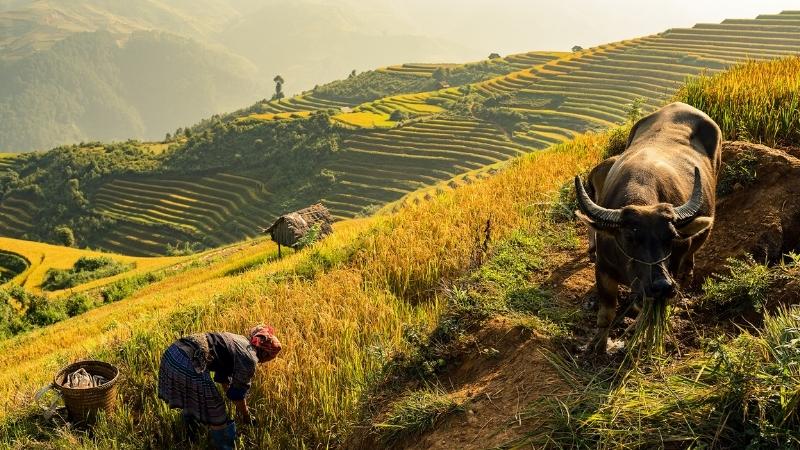
The "natural rice factories" of northern Vietnam
When to visit rice terraces in Sapa
Sapa’s rice terrace is beautiful and attractive in its own way all around the year. The terraces have their color and scenery changed seasonally. In spring, the surface of terraced fields is watered due to a new crop, which makes the terraces look like a giant mirror reflecting the sunbeam. In the summertime, the whole paddies are like green carpets then gradually turn into golden ones in autumn. Here comes the winter, and the terraces are covered with fog in a mysterious scene.
Nevertheless, the best time to visit Sapa is from mid-August to early September, when the harvest season paints the whole rice terraces a color of silky yellow.
| Things to know: Rice terraces crop season can be different each year, depending on:
|
Read more: What is the best time to visit Sapa?
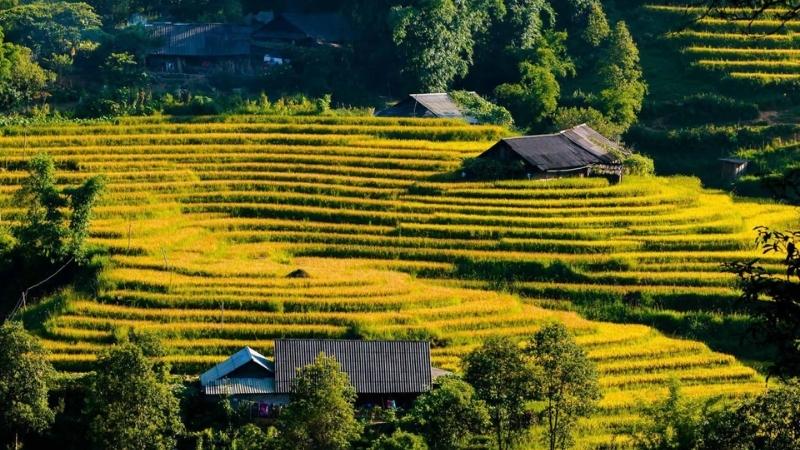
Panoramic views of sloping paddy fields in Sapa
In September, the average temperature in Sapa is 17°C and the rainfall starts to decline. Hence, you still see the terrain look a little bit muddy. Overall, the fall’s climate is so pleasant that you can enjoy a great time trekking, cycling, and sightseeing around the mesmerizing paddy files and winding valleys. Whenever you catch the sight of green rice terraces with patches of golden color, it’s the signal of the upcoming harvest season. Then, you should wait to contemplate the most alluring charm of harvested terraces that bear a resemblance to golden silk scarves curving along mountain slopes.
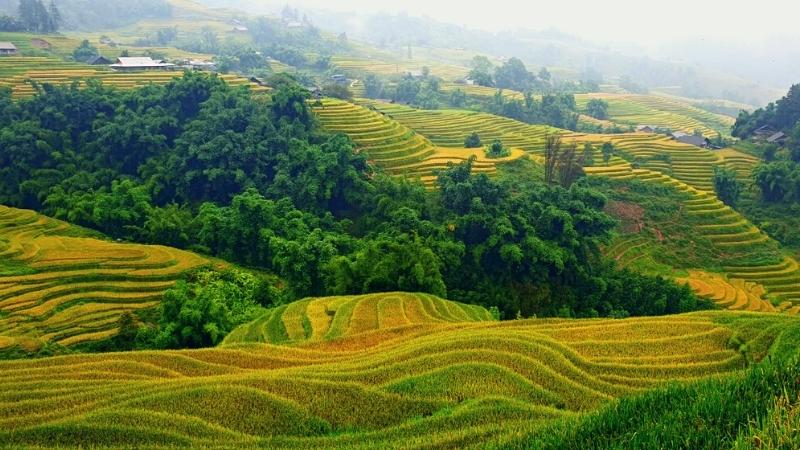
The mesmerizing yellow color of the terrace season
The picturesque landscape during harvest seasons has drawn millions of tourists to behold the beauty of Sapa once a year. September is the time of only a single crop in Sapa; then you should’ve never missed this month to capture this treasured moment. From a distance, the rice terraces look appealing and lush with ripening rice, which keeps travelers staying for admiration and urges them to explore the beauty spot with their own eyes. It’s no surprise that rice paddy fields in Sapa are voted as one of the most impressive destinations by readers of the US magazine Travel and Leisure and are being submitted to UNESCO for recognition as World Heritage of Vietnam.
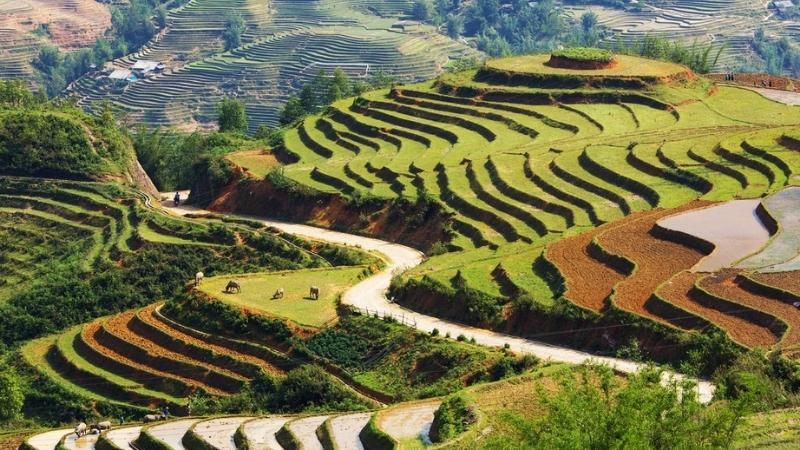
Stunning Vietnamese rice terraces (Cre: endlessloopphotography)
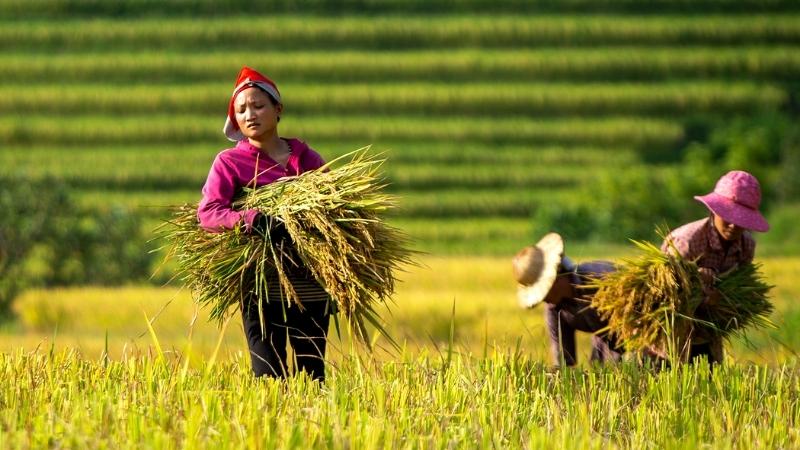
The farmers in Sapa rice terrace crop
Things to do in the Sapa rice terraces season
Join the Sapa trekking tour
Muong Hoa Valley must be the most beautiful sight to soak up the atmospheric rice terraces all the time. Visitors usually take a Sapa trekking tour through some local villages including Y Linh Ho, Lao Chai, Ta Van, Ta Phin, etc. It’s highly recommended to book a tour in advance or hire a local guide to show you around and take you to the rice terraces.
Apparently, they'll show you the best views to marvel at the rice paddies in tribe villages. You also have an opportunity to get insight into cultural values and understand how life is going with minority people day by day.
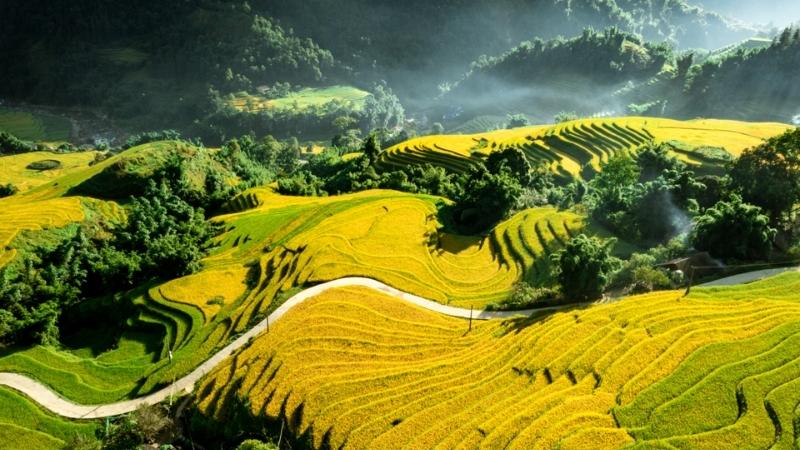
Muong Hoa Valley in rice terrace season (Cre: Duong Quoc Hieu)
| Trekking tips
|
Take Fansipan Cable Car
Instead of trekking, you can admire the aerial view of rice paddies from the Fansipan Cable Car. Aside from natural beauty, you’ll be rewarded with the glamour of the daily life of the upland region. Among the rice fields stretching across the landscapes to the horizon, the little houses and tiny people from afar make the panoramic picture much more attractive than ever.
Let's reserve the Sapa Fansipan Legend Cable Car Ticket for the upcoming rice terrace seasons.
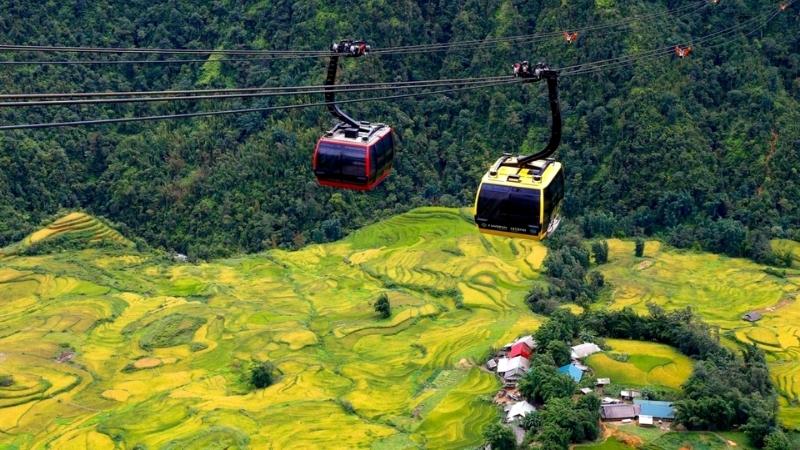
Rice terrace view from Sapa Fansipan Cable Car
All in all, you might broaden your mind and get inspired by magnificent harvested rice terraces in Sapa after reading this article. If you are an adventure seeker and keen photographer, why don’t you arrange your trip and other northern areas in Vietnam next September? Check out the best tours of Sapa here!
You may also like: 4 Best Places to See Golden Rice Fields in Vietnam
Hong Nhung
(Images source: Internet)



